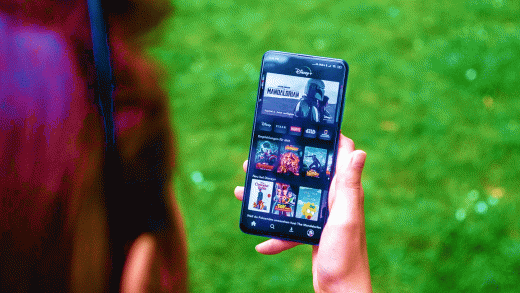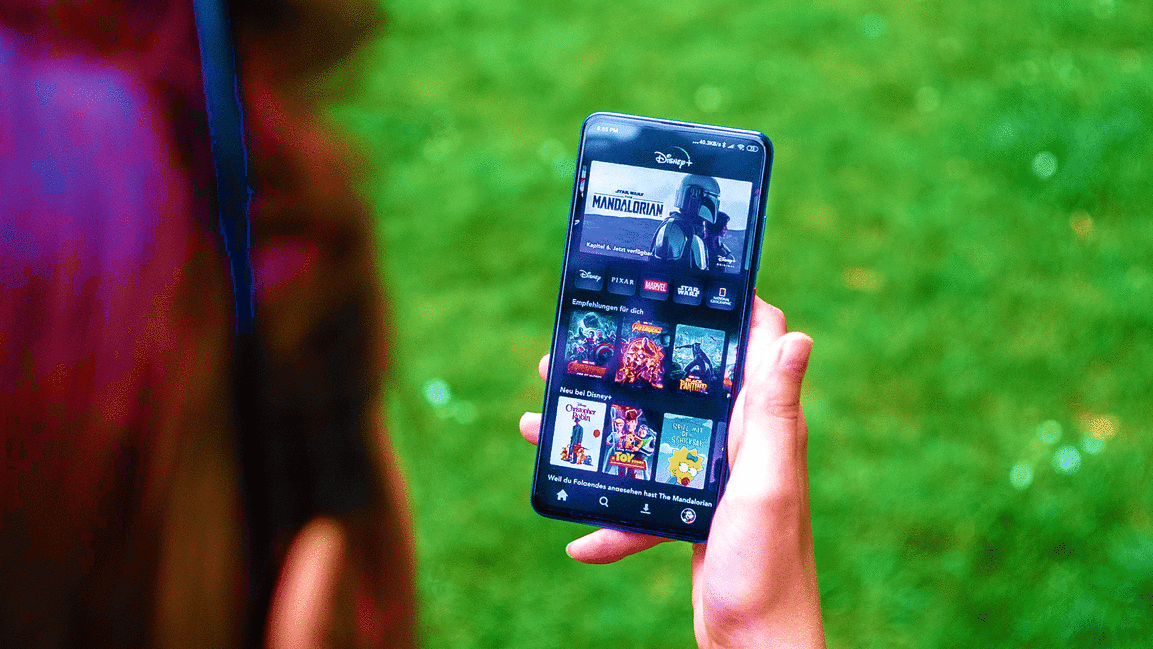Disney needs to create a streaming super app to defeat Netflix
On August 12, Disney CEO Bob Chapek proudly touted during an analyst call that the company now has 174 million streaming customers. The number is significant seeing as Disney’s signature streaming service, Disney+, is barely 2 years old, making it the fastest-growing streaming app in the race among HBO Max, Apple TV+, Peacock, et al. More important, the number reflects that Disney is tantalizingly close to catching up to Netflix—the longtime behemoth of the streaming wars—which now has 209 million subscribers globally.
In other words, Disney is also this close to toppling the narrative that Netflix is the one to beat in the battle for the future of how we consume entertainment.
There’s only one hitch: Disney’s 174 million customers are split among its streaming apps, Disney+, ESPN+, and Hulu, which respectively now have 116 million, 15 million, and 43 million subscribers. So in reality, Disney+—the main horse in the race—effectively needs to double its numbers in order to narrow the Netflix margin.
One question, which was posed by an analyst during the call, is why Disney doesn’t just toss all of its offerings into one app. The service would more closely resemble Netflix and its everything-but-the-kitchen-sink content play while also having a major leg up: Unlike Netflix, it would have live sports, thanks to ESPN+. In addition, one app to rule them all would cut down on customer confusion and the headaches of managing a multitude of streaming services.
The allure of a Disney power app would surely keep Netflix co-CEO and cofounder Reed Hastings up at night. An app that has the world’s best family programming plus live sports plus critically acclaimed adult-skewing fare from FX and Hulu? Not to mention close ties to theme parks, cruise lines, and a consumer products mega-machine to extend the buzz of all those shows and movies?
It would all be such a simple fix!
Chapek, in fact, added more fodder to this argument when he revealed that the churn rate on the Disney bundle—i.e., consumers can pay $14 for all three of the Disney apps (the price can go up to $80 a month if you want no ads on Hulu plus live TV), as opposed to the $8 a month for Disney+—is actually lower than Disney+. “Surprisingly low, even for us,” he said. “And I think what that says is that our customers enjoy the price value of the bundle that we offer and getting an incredible amount of content for a really good price.”
Disney CFO Christine McCarthy, meanwhile, added that most of the growth for Disney+ in the last quarter came from Hotstar, which now makes up a third of the total subscriber base of Disney+. Hotstar is an Indian streaming service that offers local movies and TV shows as well as live sports in the continent. Disney gained ownership of Hotstar when it acquired 20th Century Fox, and now offers it packaged with Disney+ content. This nugget is noteworthy seeing as one, Netflix has largely bungled its India play thanks to overpricing itself there (another win for Disney!), and two, Hotstar’s success shows that consumers are indeed hungry for a single app that combines the latest Marvel movie with a live cricket match, in India’s case.
In response to the why-don’t-you-just-bundle-it-all-together question, Chapek resorted to biz speak, tossing out comments about how all the international markets in which Disney operates are different, and customers in various places want a myriad of things. More noteworthy, perhaps, he remarked that there are rights issues in different markets, which is more likely what is holding Disney back.
Due to the complications of yet-to-expire contracts not just with Fox but also Hulu (Comcast’s ownership stake in Hulu doesn’t expire until 2024), Disney presumably has its hands tied when it comes to taking a total carte blanche approach to Disney’s unparalleled content cache around the world. Indeed, Chapek noted that legal issues with Fox (which had deals with HBO) are what led to the decision to release the new Ryan Reynolds movie Free Guy as a theatrical exclusive this weekend and not offer it simultaneously on Disney+.
There’s also price to consider. One of the things that’s greatly contributed to the swift rise of Disney+ is its low price. While competitors like HBO Max limited their accessibility with a premium price ($15 a month), Disney made it clear from the start that it was the best bang for your buck at just $7 a month (it’s now a dollar more expensive), undercutting even Netflix. Were Disney to package all of its apps into one mega-app, clearly that price point would go up, and the service might be less of a no-brainer for families with kids.
But perhaps the biggest issue is the question of the Disney brand and what it would mean if suddenly The Handmaid’s Tale were one click away from Luca. The identity and values of Disney+ are completely in sync with what the world has come to expect from the Walt Disney Co., and one of the joys of the service, as a parent, is to be able to leave the room when your kids are watching and not have to worry about what they might stumble upon. The idea of having to suddenly implement parental controls seems entirely counterintuitive to what Disney+ is all about.
Still, for all of Chapek’s naysaying, he didn’t slam the door on the notion of a Disney super app. “Frankly, we don’t know what’s ideal yet,” he said. “Is there an opportunity for improvement by considering something different going forward? Possibly. But we’re going to continue to learn. And as we learn, I’m sure we’ll refine our offerings in the marketplace as time goes on.”
In other words: Netflix, beware!
(51)



